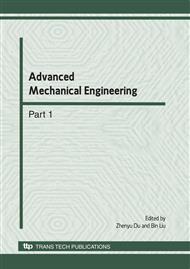p.535
p.539
p.543
p.547
p.553
p.559
p.564
p.568
p.573
Influences of Inflow Mode on Nutrient Removal Efficiency in a New SBR System
Abstract:
With influent distribution, high sludge concentration and low substrate state are carried out in ECOSUNIDE technics, bring in high nutrient removal efficiency. The “influent distribution” was introduced into conventional SBR for the treatment of municipal sewage, aiming to improve the nutrient removal efficiency. The whole process included an anaerobic and multiple anoxic/ aerobic units. The distribution ratios and modes are studied in this paper. The results show that the average sludge concentration reaches high to 6000mg/L. The influent mode has significant influences on the nutrient removal in the new SBR system. The mode of instantaneous influent in anaerobic stage and intermittent in frequent aeration stage is optimal, with the distribution ratio of 0.4/0.6, and the removal rates of NH3-N, TN and TP reach 99%, 87%, and 98%, respectively.
Info:
Periodical:
Pages:
553-558
Citation:
Online since:
June 2010
Authors:
Price:
Сopyright:
© 2010 Trans Tech Publications Ltd. All Rights Reserved
Share:
Citation:


